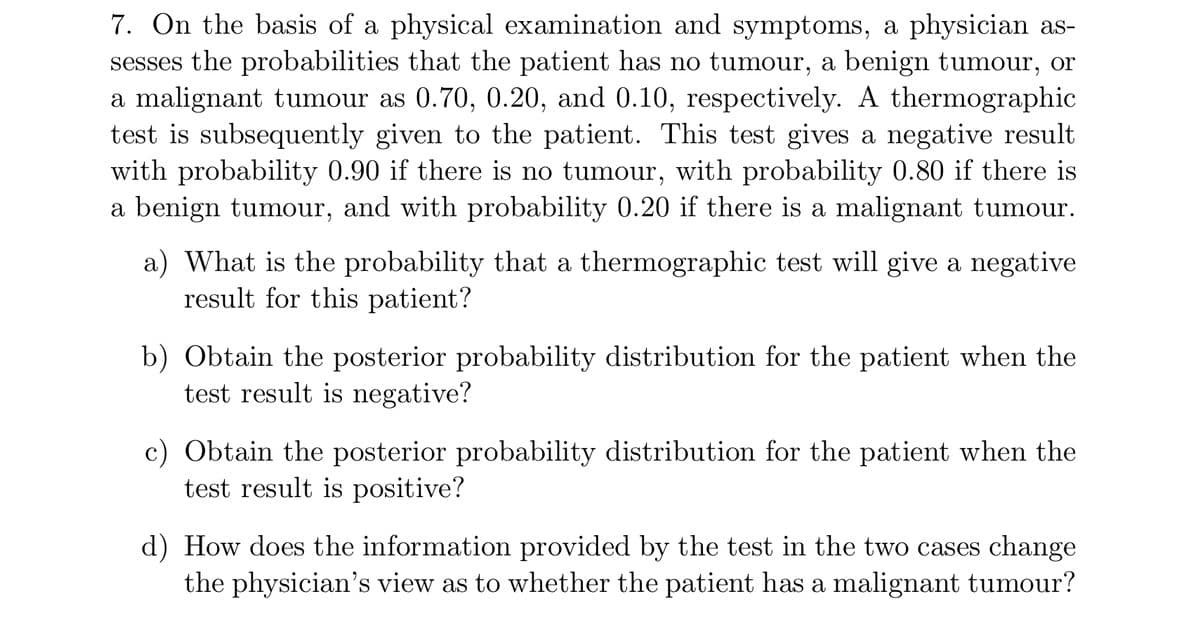On the basis of a physical examination and symptoms, a physician as- sses the probabilities that the patient has no tumour, a benign tumour, or malignant tumour as 0.70, 0.20, and 0.10, respectively. A thermographic st is subsequently given to the patient. This test gives a negative result th probability 0.90 if there is no tumour, with probability 0.80 if there is benign tumour, and with probability 0.20 if there is a malignant tumour. a) What is the probability that a thermographic test will give a negative
On the basis of a physical examination and symptoms, a physician as- sses the probabilities that the patient has no tumour, a benign tumour, or malignant tumour as 0.70, 0.20, and 0.10, respectively. A thermographic st is subsequently given to the patient. This test gives a negative result th probability 0.90 if there is no tumour, with probability 0.80 if there is benign tumour, and with probability 0.20 if there is a malignant tumour. a) What is the probability that a thermographic test will give a negative
Chapter8: Sequences, Series,and Probability
Section8.7: Probability
Problem 11ECP: A manufacturer has determined that a machine averages one faulty unit for every 500 it produces....
Related questions
Question
How to solve d)

Transcribed Image Text:7. On the basis of a physical examination and symptoms, a physician as-
sesses the probabilities that the patient has no tumour, a benign tumour, or
a malignant tumour as 0.70, 0.20, and 0.10, respectively. A thermographic
test is subsequently given to the patient. This test gives a negative result
with probability 0.90 if there is no tumour, with probability 0.80 if there is
a benign tumour, and with probability 0.20 if there is a malignant tumour.
a) What is the probability that a thermographic test will give a negative
result for this patient?
b) Obtain the posterior probability distribution for the patient when the
test result is negative?
c) Obtain the posterior probability distribution for the patient when the
test result is positive?
d) How does the information provided by the test in the two cases change
the physician's view as to whether the patient has a malignant tumour?
Expert Solution
This question has been solved!
Explore an expertly crafted, step-by-step solution for a thorough understanding of key concepts.
This is a popular solution!
Trending now
This is a popular solution!
Step by step
Solved in 3 steps with 2 images

Recommended textbooks for you

